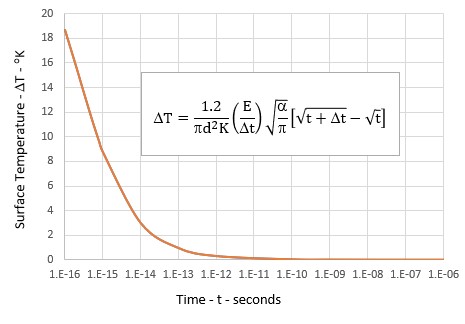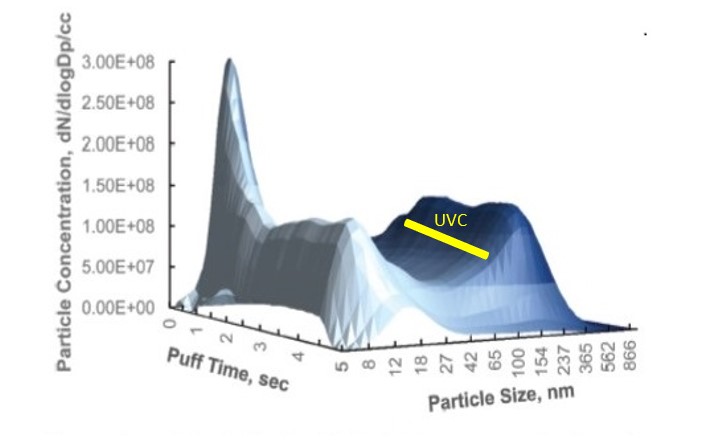Quotations
Thought for Us
A man should look for what is, and not for what he thinks should be.
The Electrostatic Filopodia
Classical physics allows the atom to have heat capacity at the nanoscale, the conservation of heat proceeding by an increase in temperature. However, simple QED based on the Planck law of quantum mechanics (QM) denies the atoms in bundles of filament the heat capacity to conserve heat by a change in temperature, the consequence of which is 60-100 nm bundles of 8 nm F-actin filaments protruding from the leading edge of cancer cells conserve thermal heat from the surroundings by producing endogenous simple QED induced EM radiation that at UVC levels charges the filopodia positive by the photoelectric effect.
Cancer mitosis occurs as the endogenous UVC continuously charges the filopodia filaments positive thereby providing the electrostatic force that pulls the cancer cell to the negatively charged normal cells, but may stall if the charged filopodia is trapped in the extra cellular matrix.
In muscle contraction, simple QED similarly charges the myosin heads, but differs in that the CNS produces action potentials to control charging.
Herein, the latest simple QED requirement of a penetration depth in the bundle surface upon absorbing thermal heat is revised to the spontaneous conversion of thermal heat at the bundle surface to standing EM radiation inside the bundle.
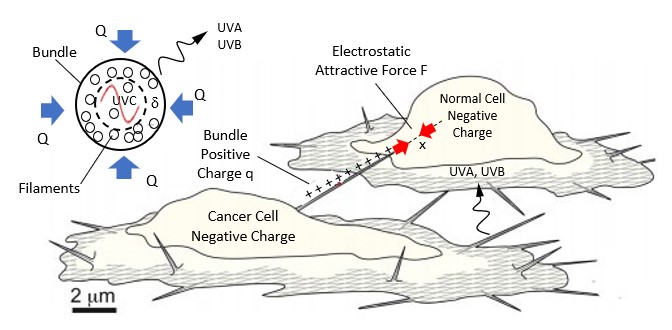
Conclusions
For bundles of 25 filaments, filopodia tips separated by 1 micron from a cancer cell in a filopodia having a net positive charge of +2 e/ nm produce electrostatic attractive force F > 2 pN for filament lengths > 100 nm.
In EVMM with cancer cells moving along the outside surface of blood vessels, the electrostatic attraction to the vessel wall is on the order of 2 pN/ micron of motion.
Single filament filopodia not observed in vivo are only of academic interest. Instead, bundles of ~25 actin filaments should be the focus in cancer metastasis.
Simple QED creates UVC radiation producing positive charge in the filopodia bundles is a continuous process supplied by cycles of heating from the thermal surroundings until the tip contacts negatively charged normal cells or the extracellular matrix.
Single actin filaments are not positively charged because the number of atoms in a filament is insufficient to produce UVC radiation and is consistent with the long-standing notion of counterions to avoid like-charge repulsion and achieve neutrality in the assembly of filaments into bundles.
Unlike single filaments, assembly of 25 - 30 filaments having far more atoms produce UVC to allow assembly without the need of counterions to avoid like-charged repulsion, a notion that may be extended to actin polymerization thought to be a precursor to filopodia producing force.
The long-standing notion in biophysics that like-charged macromolecules can aggregate under the influence of oppositely charged counterions needs revision for larger numbers of macromolecules.
Single actin filaments thought to require counterions to avoid the like-like repulsion in assembly is not necessary as the number of atoms in a single filament simple QED induced positive charges cannot produce are produced bundles of 25 - 30 filaments.
Stalling of filopodia growth occurs as the bundle of filaments contact negatively charged extra cellular matrix fibers.
Neutrophil fibres having diameters ~50 nm emit simple QED induced EM radiation do indeed act as a bactericide to inactivate bacteria before reaching normal cells.
Simple QED of filopodia in cancer metastasis finds similarity with myosin bundles in muscle contraction. The basic difference is the direction of the electrostatic force from charging of myosin is well defined and controlled by action potentials from the CNS; whereas, the filopodia in cancer metastasis grow depending on the random directions of electrostatic attraction to negatively charged normal cells or the extracellular matrix. \
A preliminary Paper is available
Cancer: UVC induced Nanoparticle Treatment
and Metastasis
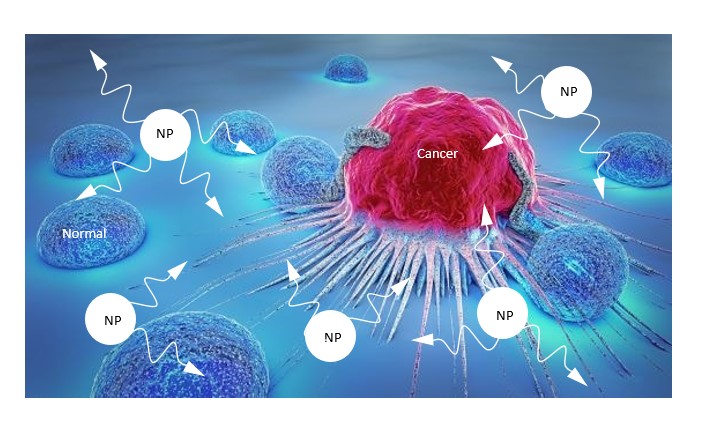
Collateral DNA damage to normal cells does occur, but is corrected by DNA repair systems. CDC tests to determine safe NP dosage levels in the NP treatment are required to confirm the expectation that UVC levels will not compromise normal cells based on the argument that survival of organisms on the primitive Earth required evolution of DNA repair systems to continuously correct for DNA damage from the far more intense solar UVC. If so, cancer treatment by low level NP induced UVC should not be problematic.
Simple QED not only emits UVC from NPs to treat cancer, but is the source of cancer metastasis as UVC emitted from ~100 nm filopodial protrusions at the leading edge of cancer cells damages DNA in distal normal cells.
A preliminary Paper on the UVC Nanoparticle Treatment and UVC induce cancer metastasis is available.
Nanothermometers?

Thermometers using nitrogen-vacancy (NV) centers in nano-diamonds are claimed to measure temperature changes of 0.22 °C in biological cells as a microscopic biological sensor. The temperature is inferred by the fluorescence generated from laser excitation of spin-resonant NV centers upon relaxing back to the ground state. See Physics Today
The measured temperature variations are thought to understand how submicron organelles regulate metabolic heat. However, there is much controversy about the magnitude of temperature changes that occur at the sub-cellular level. Indeed, much smaller expected temperature changes 0.00001 << 0.22 °C based on cellular heat generation rate are expected. See Nature Methods. 12:802-803 (2015).
By simple QED, both the expected 0.00001°C and measured 0.22 °C temperatures are not correct as the Planck law precludes ALL temperature changes in the nano-diamond, i.e., classical physics allows the atom to have heat capacity at the macroscale, the conservation of heat proceeding by an increase in temperature. However, the Planck law of quantum mechanics denies the atoms in nano-diamonds the heat capacity to conserve heat by a change in temperature.
What this means is metabolic heat thought causing small NV temperatures is actually conserved by the emission of non-thermal EM radiation observed as NV fluorescence, e.g., mitochondrial metabolism has nothing to do with temperature and, in fact produces endogenous UV radiation required for ATP synthesis by dehydration.
Comments,
The NV Spin-Hamiltonian based on classical physics is not applicable to nano-diamonds. Temperature changes to the NV emission are invalid. Metabolic heat produces EM emission without any change in temperature. See Nano Lett. 13: 2738–2742 (2013).
Instead, the NV Spin-Hamiltonian should be based on heat given by the Planck law of quantum mechanics without nano-diamond heat capacity. See e.g., Open Thermodynamics Journal. 2:22-24 (2008).
The Covid-19 in vivo Vaccination
Traditional vaccine development requires a long time to develop and test a safe antigen, but as in the Covid-19, the attendant social unrest and world-wide economic depression is unacceptable. A new paradigm in vaccines in the control of Covid-19, or any future infectious virus is suggested. The new paradigm is "The Nanoparticle treatment" that acts as an in vivo vaccine for patients tested positive for the Covid-29 virus, the antigens produced by deactivating a few live virions inside the patient's body with UVC radiation, the deactivated virions acting as the antigen to illicit immunity for inactivating the remaining virions in the patient's body as well as future Covid-19 infections. But external UV lamps cannot provide UVC radiation inside the body. In this regard, the UVC is produced from nanoparticles in biodegradable nanoparticles delivered to the patient by intravenous injection. The theory of simple QED predicts 80 nm lipid nanoparticles conserve heat from the surrounding blood into UVC photons to inactivate the live Covid-19 virions. DNA or RNA fragments are not required. Collateral nanoparticle induced DNA damage at low UVC levels is negligible and corrected by DNA repair systems. If the CDC shows efficacy of nanoparticle injection to illicit Covid-19 immunity, the intravenous injection of nanoparticles would be replaced with the more convenient oral delivery in pills. See Paper
Cosmology by Redshift in Cosmic Dust

Since Hubble, optical redshift measurements giving galaxy velocities higher than observed were accepted by assuming the presence of dark matter lowered the high velocities to levels consistent with Newtonian mechanics. In this way, dark matter was thought to exist in order to explain why the Milky Way rotated faster than observed. Similarly, optical redshift measurements of the M31 spiral galaxy showed high velocities at the dusty periphery that established flat rotation curves as the signature of dark matter. Recently, the Ghost galaxy absent obscuring dust was found to have a falling rotation curve.
In this paper, dust redshift is shown to be the consequence of the Planck law that precludes atoms in dust less than a certain size from having the heat capacity to allow conservation of galaxy light by a change in temperature. For galaxy photons having wavelengths greater than the size of the dust, the absorption of a single galaxy photon produces heat that is absorbed in a thin penetration depth over the full dust surface, the penetration depth serving as the physical confinement for creating a photon from the energy of an absorbed galaxy photon, the redshift galaxy photon created having halfwavelength equal to the distance opposing penetration depths. Once created, the physical boundary vanishes and the redshift galaxy photon is free to travel to the Earth. Unlike Einstein’s dust-free Universe where optical measurements do indeed measure actual galaxy velocities, velocities in the dusty Universe are highly overstated in estimates of Universe expansion.
Moreover, CMB radiation thought related to Universe expansion as a relic of the Big Bang is shown produced by blackbody radiation from asteroids in the Oort cloud of our Solar system, the asteroids heated by solar radiation from the Sun. Cosmology based on an expanding Universe from overstated redshift by dust and the CMB as a relic of the Big Bang is highly questionable.
A prelminary Paper is available. A narrated video Presentation is 25 minutes long is also available. The video quality can be improved using the VLC Media player and adjusting the synchronization to audio -0.2 seconds. Alternatively, you can link https://nanoqed.org/resources/2020/Cosmos20.mp4 and use the VLC Media player.
Covid-19 Patentability

Classical physics allows the atom to have heat capacity at the nanoscale, the conservation of heat proceeding by a change in temperature. However, simple QED based on the Planck law of quantum mechanics denies the atoms in nanoparticles (NPs) the heat capacity to conserve heat by a change in temperature, the consequence of which is ~80 nm lipid NPs conserve heat by creating UVC radiation. Patients tested positive for Covid-19 are therefore proposed to be given single intravenous injections of NPs in saline, the NPs emitting UVC to inactivate in vivo a limited number of Covid-19 virions that then act as the antigens to elicit immunity to the remaining virions currently in the patient's body, as well as to future Covid-19 infections. Indeed, simple QED is patentable as an in vivo Covid-19 vaccination; whereas, Moderna's patent based on the surprising discovery that non-lamellar lipid structures somehow produce charge in transfecting mRNA across cell walls is not patentable. However, the NPs may enter the brain and damage neurons and DNA, but with low level NP induced UVC intensity the NP induced damage is expected to be minimal. CDC testing to determine low level NP doses is requested. See preliminary Paper
In summary,
The Moderna patent based on a surprising discovery of non-lamellar lipid structure was properly rejected by the USPTO as not patentable. Moreover, Moderna's inference that charge is somehow produced in non-lamellar lipid structures is invalid.
Simple QED produces charge depending on the size of NPs < 100 nm formed by lipid structures independent of lamellar or non-lamellar phases, the charge produced by EM radiation removing electrons to produce positive charge.
Like the Moderna patent based on a surprising discovery of non-laminar lipid structures, simple QED charging based on the theory of the Planck law is also not patentable as scientific theories are not patentable. But applications of scientific theories are patentable. Hence, charging of NPs by simple QED should be patentable.
The Planck law allows ~80 nm lipid NPs to produce UVC radiation that disinfects the Covid-19 from the heat at body temperature, a significant difference with classical physics that predicts the lipid NP only acquires body temperature.
Regarding Covid-19 disinfection, simple QED produces UVC from lipid NPs using only the thermal energy of the surrounding blood and tissue.
In the manner of an in vivo Covid-19 vaccine, the NP treatment of UVC disinfection of a patient tested positive by a single intravenous injection that inactivates a limited number of live virions to produce the inactivated virions that act as the antigen to elicit immunity to inactivate the remaining virions in the body, including future Covid-19 infections.
The FDA is recommended to approve UVC disinfection of Covid-19 in vaccinations of ~ 80 nm lipid NPs in small quantities. In the blood stream, the disinfection would be rapid. NPs entering the brain may damage neurons and DNA. Nevertheless, the temporary low UVC levels make risks minimal by allowing DNA recovery by repair systems.
CMBR and Cosmic Dust
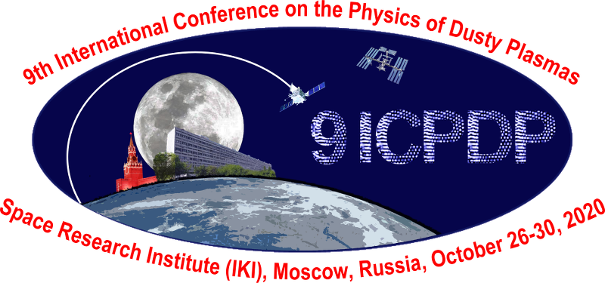
Cosmic Microwave Background Radiation (CMBR) evolved from early Big Bang models by Gamow beginning in 1948. Only later in 1965 did Penzias and Wilson discover the microwave radiation coming from space. Dicke and others concluded the CMBR would still be present in the Universe as blackbody EM radiation with a temperature of about 10 K not from a cold source, but rather from the Big Bang expansion of the Universe.
Today, the CMBR is thought to be blackbody ration at temperature 2.725 K at 160 GHz. Indeed, the 2019 Nobel prize in physics was awarded to J. Peebles for interpreting the CMBR and integrating dark matter and dark energy into the cosmological framework. Like Dicke, the Nobel committee ignored temperatures ~ 2.7 K are a natural consequence of our Solar System.
Beyond the Planetary System, the Oort Cloud at 10,000 AU is naturally cold at 2.725 K. Unlike the disk-like Planetary System in the ecliptic of the Sun, the Oort cloud is spherical about the Sun allowing the CMBR to be isotropic in all directions.. The equilibrium temperature T of the Oort Cloud debris at distance D from the Sun having radius Rs and temperature Ts may be estimated by assuming blackbody thermal radiation absorbed without reflection.
Of importance is the black body temperature T of Oort cloud debris is independent of debris size, i.e., the debris may be discrete nanoscopic cosmic dust or asteroid sized bodies having spacings to allow light from the Universe to be observed on Earth. Clearly, the Oort cloud need not be an opaque spherical shell to qualify as blackbody as reported in the literature.
Dicke might have realized the Oort Cloud blackbody temperature T ~ 2.725 K at 10,000 AU would have explained the CMBR temperature, but rejected this interpretation because redshift measurements suggested the CMBR exists at distances >> 10,000 AU. Nevertheless, the notion of a blackbody temperature T = 2.725 K exactly at about 10,000 AU is not reasonable. In fact, the CMB temperature is not measured exactly at 2.725 K, but reported as 2.725 +/- 0.00057 K. What this means is the blackbody temperature varies slowly about 10,000 AU. The graph below shows temperature change of 2.725 K occurs at D = 10,492 AU, but is spread over +/- 6 AU, certainly not exactly at 10,492 AU.
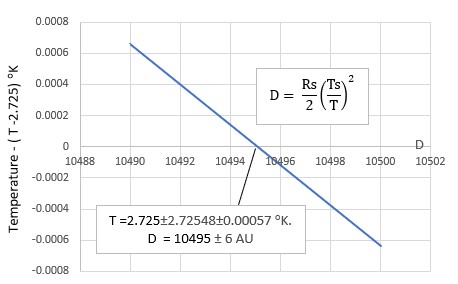
Since the CMBR appears spotted and patchy, the CMB temperature of discrete Oort cloud debris requires similar patchiness. However, the minimum size of the debris is given Planck law at 2.725 K. In the figure below, the Planck law at 300, 100, and 2.725 K shows the minimum wavelength l at which the debris can have finite temperature occurs at the classical edge of the Planck law at 200, 1000, and 20,000 microns, respectively. Taking refractive index n = 1.5, simple QED gives the respective minimum debris diameter d = l/2n = 67, 333, and 6700 microns. What this means the minimum size of Oort cloud debris at 2.725 K spread over the +/- 6 AU band are not micron sized particles, but rather rather small asteroids having diameters larger than about 6.7 meters. At 2.725 K, only asteroids > 6.7 m emit thermal blackbody radiation at 160 GHz. Indeed, all solid matter < 6.7 m, say 2.2 m, does not emit blackbody radiation, and instead emits non-thermal simple QED radiation < 4 MHz while 1 micron dust emits near IR at about 3 microns.
The issue of whether micron sized dust may be treated as a blackbody radiator goes back about 50 years. In 1969, Purcell questioned the assumption of blackbody radiation from micron-sized intergalactic dust on the basis micron-sized objects are very poor radiators of millimeter waves and thus cannot be black. Contrary to Purcell, astronomers have continued to incorrectly assume micron-sized dust responds to temperatures as blackbody radiators, an assumption that continues to this day in the explanation of IR spectra in the ISM. The Planck law shows that for all temperatures < 300 K the micron-sized dust cannot be a blackbody radiator, and instead conserves solar heat by emitting non-thermal simple QED radiation.
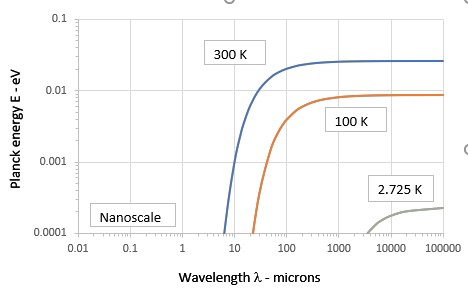
On CMBR redshift, Dicke probably assumed the dust in our Solar System would not alter the validity of the high redshifts associated with an expanding Universe. However, cosmic dust permeates our Solar System and absorbs galaxy light prior to reaching the Earth. Today, dust absorption is thought to increase temperature to produce IR spectra. But dust is < 1 micron and nanoscopic that by the Planck law lacks the heat capacity to increase in temperature. By the theory of simple QED, conservation of an absorbed galaxy photon proceeds by the emission of a photon observed on Earth as a redshifted galaxy photon.
Conclusions
What Penzias and Wilson were measuring in 1965 was likely blackbody radiation from asteroids in the Oort cloud that today is known as CMBR given by the black body temperature of ~ 2.725 K at frequency 160 GHz. Gamow's Big Bang model advanced by Dicke and concluding the CMBR was the relic of Universe expansion is highly questionable as the CMBR created in the Oort cloud of our Solar system suggests the Big Bang never happened. A preliminary Paper on the effects of cosmic dust in Astronomy is available.

In1961, Mitchell proposed ATP synthesis in mitochondria occurs by oxidative phosphorylation in chemiosmosis from a flow of H+ protons across the inner membrane. However, ATP synthesis by chemiosmosis has a history of controversy. In order to show chemiosmosis did indeed produce ATP with H+ proton gradient, the acid-bath experiment was performed. Chloroplasts were acidified in a pH4 solution and then immersed in a basic pH 10 bath, thereby forming a H+ gradient across inner membranes. ATP was measured allowing the conclusion a H+ gradient produced the ATP consistent with chemiosmosis.
However, ATP may have been created by the heat of titration producing an increase in temperature of the mixture. But the nanoscopic grana and stroma in the chloroplast cannot increase in temperature as the heat capacity vanishes by the Planck law. By the theory of simple QED, the grana conserve the heat of titration by creating UV radiation that produces ATP by the dehydration reaction shown above, i.e.,
ADP + Pi + UV = ATP + H2O.
What this means is the ATP produced in the acid-bath experiment was most likrly produced by UV enhanced dehydration. Indeed, Carl Sagan et al. showed ATP was produced by UV enhanced dehydration in 1963. Since ADP and phosphates Pi were likely present on the early Earth, UV was assocaiated with the origin of life.
On the early Earth, UVC was intense, but after the ozone layer formed, UVC greatly diminished and to survive the mitochondria was required to evolve its own source of UV.
What was, and now what is the UV source?
One possibility is simple QED - a nanoscale heat transfer process based on the Planck law of quantum mechanics differing significantly from that of classical physics. The Planck law denies atoms in nanoscale regions of mitochondria the heat capacity to change in temperature as occurs inclassical physics. Instead, heat Q in mitochondria is conserved by the emission of EM radiation standing in the space between adjacent cristae. Indeed, mitochondria produce Planck energy E = hc/2nd at UVC levels in spaces d between 50 - 100 nm between adjacent cristae.
Conclusions,
In the acid-bath experiment, ATP was produced by UV enhanced dehydration from ADP + ribose between nanoscale spaces in stroma of chloroplasts - not by H+ protons in chemiosmosis.
Mitochondria produce ATP by UV induced dehydration between cristae that by simplicity alone supersedes the chemiosmosis. However, the UV also damages DNA, but DNA repair systems allow almost complete recovery.
Survival of the species from the early Earth to this day has been a close balance between ATP produced and attendant DNA damage. as corrected by DNA repair systems.
Darwin's origin of the species most likely evolved from intense UV enhanced DNA mutations on the early Earth.
A preliminary Abstract is available
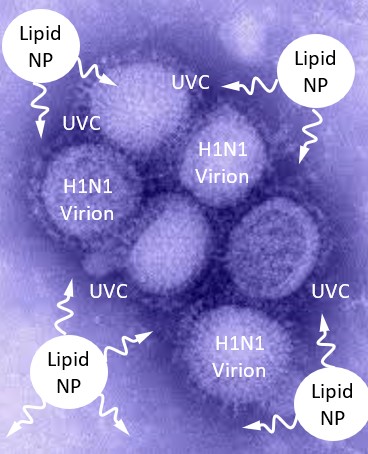

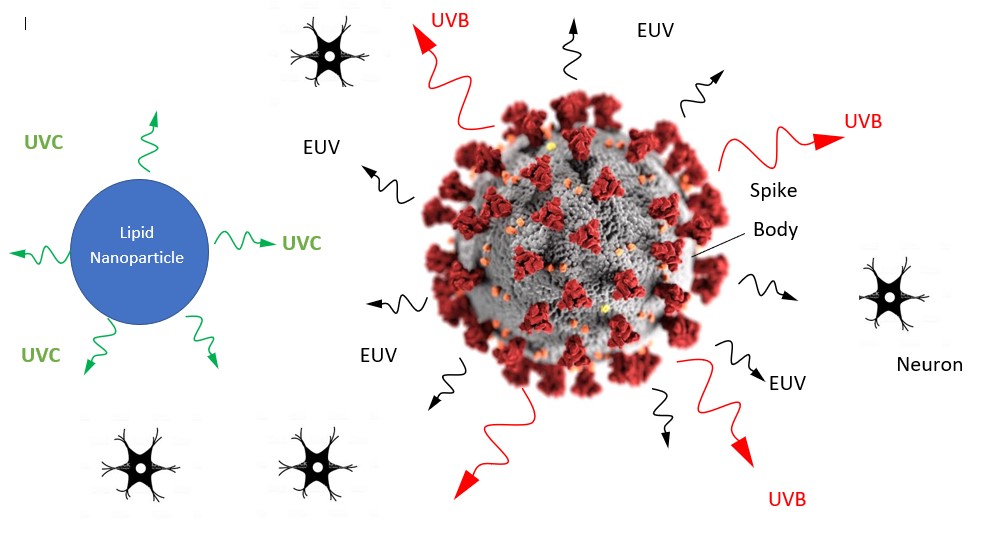
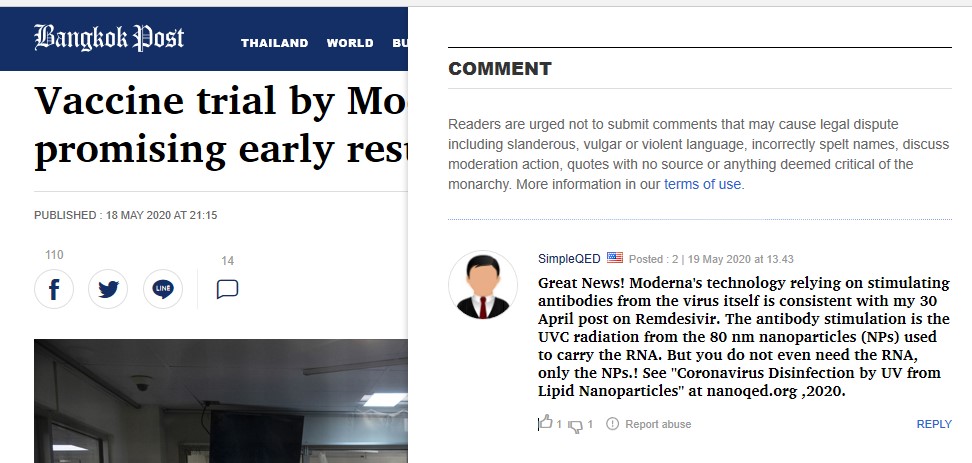
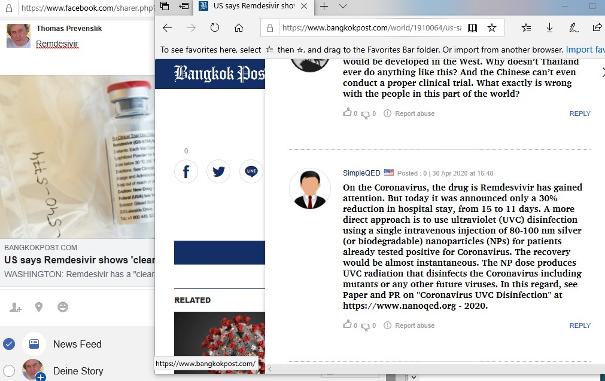
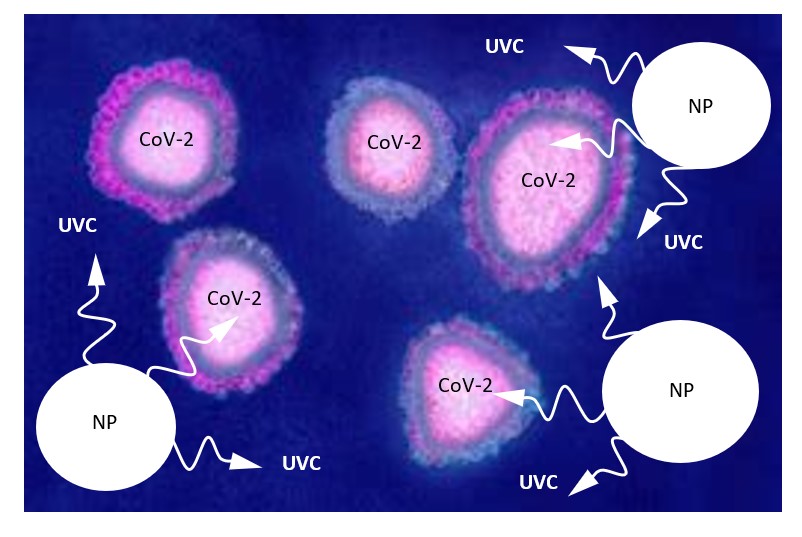
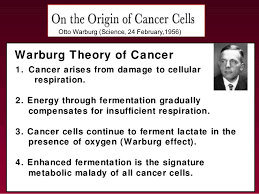
The argument: "Without peroxisomes there could be no way for cells to produce peroxides necessary for metabolism, but peroxides are also toxic and there could not be any way to rid peroxides from the body" is false. Endogenous UV can both produce and rid peroxides.
Peroxisomes involved in the oxidation of long chain fatty acids to acetyl CoA, a process that is not possible in mitochondria. The breaking of single and double carbon bonds along the fatty acid backbone require UV energies of 3.6 and 6.3 eV. UVC energy of 4.88 eV is not sufficient to break carbon double bonds, but simple QED can produce UV at 200 nm in peroxisomes.

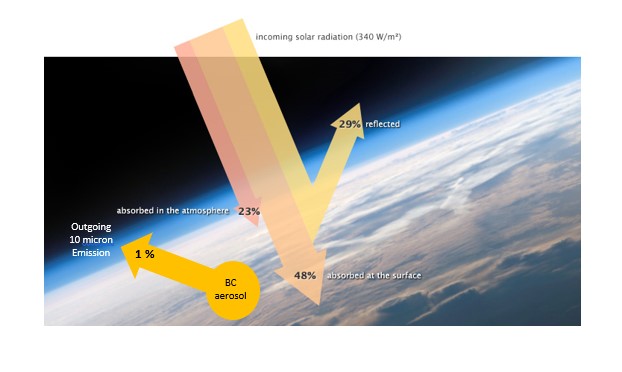


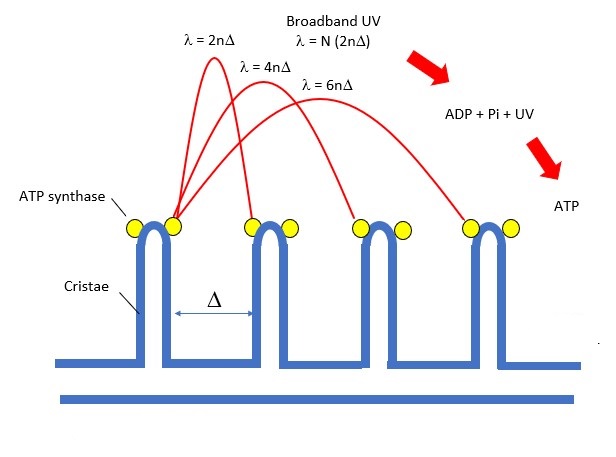
The UV level for mitochondria species may not be UVC. Experiments are required to determine the optimum UV wavelength to enhance ATP synthesis by dehydration. Tthe UV wavelength which optimizes UV enhanced ATP synthesis of mitochondria species must be determined by experiment.

man's QED) similar to inelastic Raman scattering that changes the frequency of absorbed light, but differs in that absorption and emission occur in size dependent EM quantum states of the nanostructure. Since NPs are small compared the wavelength of incident light, simple QED assumes light is absorbed over the NP surface consistent with the high surface surface-to-volume
ratio of NPs. But the Planck law precludes conservation of absorbed light by a temperature increase, and therefore simple QED asserts standing EM radiation is created inside the NP, the absorbed surface heat itself providing the EM confinement to constrain standing EM radiation inside and across the NP diameter. In effect, simple QED conserves EM heat in nanoscale regions by
creating EM radiation - not temperature. Hence, Maxwell simulations of nanoscale regions need to include light emission instead of temperature changes.


July 23-24, 2020 in Berlin, Germany
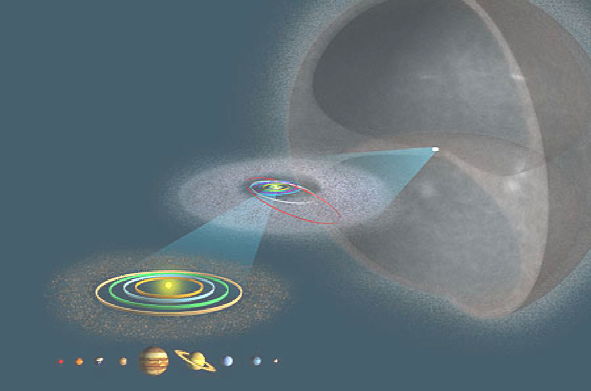
Gamow's Big Bang model advanced by Dicke and others concluding the CMBR is the relic of Universe expansion is highly questionable as the CMBR created in the Oort cloud of our Solar system suggests the Big Bang never happened. The Nobel committtee award to Peebles for interpreting the CMBR as the relic of Universe expansion is unfortunate.
Thermal equilibrium of blackbody radiation between the Sun at 5800 K and the Oort cloud at temperature ~ 2.7 K is a far more credible rationale than Universe expansion.
Blackbody theory does not require the Oort cloud to be continuous and opaque to absorb and emit blackbody radiation. Discrete particulate and debris are acceptable black bodies separated by large spaces to allow light of the Universe to reach the Earth.
The CMBR dipole anisotropy caused by the red and blue shift of CMBR photons as the Earth moves in orbit around the Sun produces the dipole anistropy.

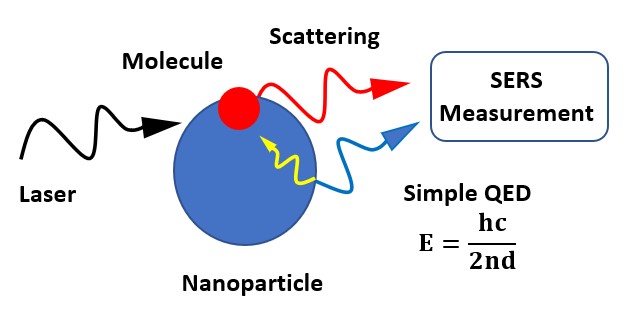
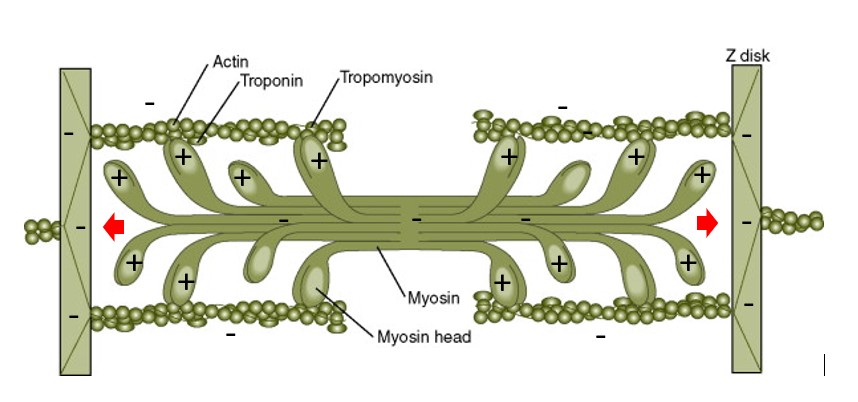
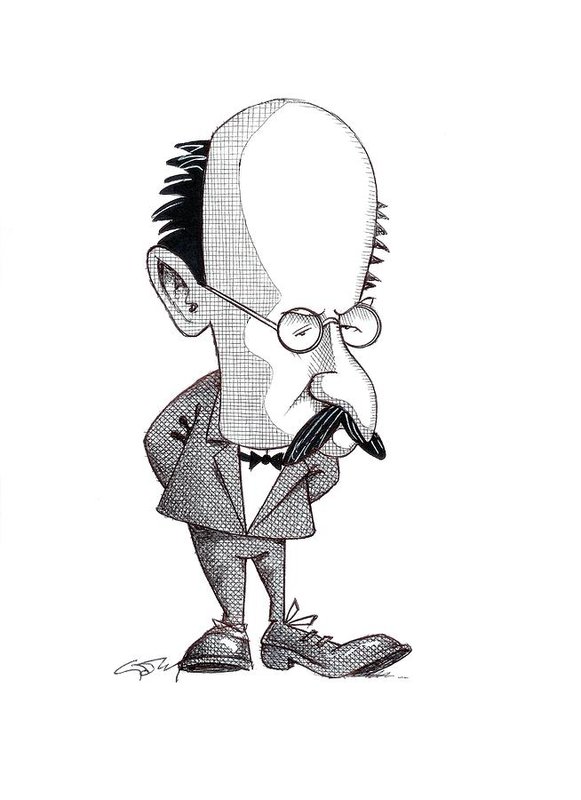
Absent heat capacity, heat transfer without changes in temperature preclude the Fourier law of heat conduction commonly used in nanoscale heat transfer. Similarly, the Stefan-Boltzmann law for radiative heat transfer depending on temperature is not applicable to nanostructures. Although valid at the macroscale, Fourier and Stefan-Boltzmann equations are invalid at the nanoscale. Since the 1960's, Molecular dynamics based on classical physics thought to provide an understanding of the atomic response to thermal disturbances assume atoms in nanostructures have temperature. Clearly, researchers need both the development of new theory and computational procedures to understand nanoscale heat transfer.
But ATP by hydrolysis and not UV dehydration was adopted as the basis for the sliding-filament model of muscle contraction. The contraction between actin and myosin filaments was thought to be a conformation of myosin heads of ADP + P attaching to actin to perform the power stroke. Upon binding with another ATP, the head detaches from actin in recovery by a conformation change, the process repeating like a ratchet during sliding.

Myosin heads not bound to negative charged actin filaments always carry positive charge. But contact with myosin or actin filaments neutralizes the positive charged myosin heads. Upon loss of contact, myosin heads regain positive charge in < 1 ps.
Heat in the thermal surroundings creates the EUV photons inside the myosin head to allow photoelectric charging. A single ATP binding to a myosin head releases 0.304 eV, but a EUV photon standing across the length of the myosin head requires 37.6 eV. Heat from the thermal surroundings powers muscle contraction and not ATP binding, although ATP binding contributes to thermal heating.
Muscle contraction aside, ATP in mitochondria is produced by endogenous UV instead of hydrolysis by chemiosmosis from a H+ ion gradient through the membrane wall. EUV enhanced ATP synthesis by dehydration in the myosin heads produces ATP directly. Mitochondria are not needed to produce ATP in muscles.
The seminal question in muscle contraction is: How is chemical energy converted to mechanical work?
Muscle contraction is proposed to be the consequence of converting heat from the surroundings into the mechanical work of contracting actin filaments by electrostatic forces induced by charge in the myosin heads, the charge created by the photoelectric effect from endogenous EUV radiation produced in myosin heads by simple QED radiation. The myosin head in the sliding-filament model adapted for endogenous EUV in muscle contraction is shown below.
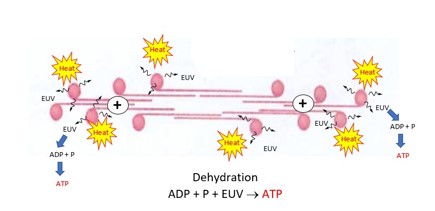
The myosin heads are treated as 20 nm spherical nanoparticles (NPs) comprised of atoms absent heat capacity by the Planck law. The NPs cannot conserve heat Q by an increase in temperature and instead emit spherical EUV radiation that fluoresces down to UV levels. The EUV is used in a dehydration reaction with available ADP and P to produce ATP. However, the EUV also removes electrons from the myosin heads by the photoelectric effect to create a positive charge.
With both myosin and actin initially charged negative, the positive charged area near the myosin tips undergoes Coulomb attraction to the negative charged α-actin ends at the Z-line. Upon contact of the myosin tips with the actin at the Z-line, the positive charges are neutralized and muscle contraction ceases. Muscle relaxation occurs by Coulomb repulsion of negatively charged myosin and α-actin. Taking the electrostatic force F = 2 pN, the positive charge q ~100 electron charges or 100 singly charged myosin heads. Assuming each myosin head produces 1 EUV photon that fluoresces down to 1 UVC photon, 1 electron is emitted leaving the head with a single positive q charge. Since about 150 myosin heads are available in a half-sarcomere, 100 heads produced the 2 pN contraction force.
But is the single EUV photon created by thermal metabolic heat or ATP binding?
Consider the heat Q from the thermal surroundings to create the EUV photon and ignore the heat from ATP binding. The change in surface temperature under the absorption of the Planck energy E of a EUV photon pulse given from the surrounding muscle and blood is shown below.
